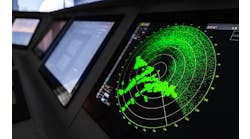Presence sensing is a broad topic that entails both object detection and machine guarding. Choosing the right device always entails some forethought, especially when installing it in difficult-to-reach or hazardous areas. Our panel of experts tells you what you need to know.
What sensor recommendations would you make for object detection in a machine where maintenance would be infrequent and difficult?
For example, some laser measurement sensors with IO-Link provide excess gain data via IO-Link, which can be used to identify when a sensor requires cleaning. Alerts can be set up so that sensors can be cleaned before the buildup of debris impacts their sensing functions. Device-connection issues are also reported in real time, allowing them to be resolved in a timely manner.
In addition to providing valuable health outputs, IO-Link also allows users to track total runtime data to predict when to replace a device. With this information, sensors can be replaced during scheduled maintenance, avoiding unnecessary downtime.
In areas where maintenance is limited or infrequent, I would recommend looking at an inductive proximity sensor line. These are sensors that are for noncontact detection of metal targets. Inductive sensors are very robust; they withstand high shock and vibration while ignoring oil, dirt and lubricants. They also come in various housing sizes to accommodate specific application areas. If longer ranges are needed, a magnetic sensor line can be capable up to 60 mm of operating range when used with a magnet or magnetic target. Both inductive and magnetic field sensors are great alternatives to mechanical detection devices that frequently result in failure due to their mechanical natures and movements.
Use an inductive sensor if you need high speed, noncontact response with a PNP/NPN discrete or 4-20-mA analog output.
Use an electromechanical limit switch for slower-speed targets you can touch and also if you do not have a power supply or if you need to directly switch a high voltage and current load.
The element of sensor performance that needs to be more robust will vary depending on the nature of the application environment. In some applications, the presence of water, oils, cutting fluids or other chemicals demands a sensor built with additional features to physically survive in such an environment.
In other applications, the presence of intense electrical or electromagnetic fields demands a sensor with additional capability to withstand such fields and continue to operate. Still other equipment operates in environments where airborne contaminants create interference with optical sensors; in those cases sensor survival depends on having additional optical power to burn through those contaminants.
Many current, smart sensors are already equipped with IO-Link, which is becoming more of a desirable communication method. There are no extra wires to install, and all the communications come up and down the output wire, so you can utilize the same wiring as any standard sensor.
Other simple-to-use five-wire devices oftentimes have remote setup capabilities. These sometimes use a proprietary code that is simple to customize and make very secure through handshaking-type words, protected by complex algorithms and rolling passwords.
There are very many types of communication methods, too—as many as there are sensing technologies. However, IO-Link seems to be very easy to implement, and many sensor companies have adopted it. We very well may have found our one-size-fits-all in this case.
That being said, some applications do require that sensors be located in space-restricted areas. In those instances, a sensor with a remote amplifier and sensing head may be the solution. This combination removes the electronics from the harsh or inaccessible locations, leaving the sensing head, which typically can be disconnected and more easily replaced.
Also, selecting the right light source, which in this case would be an infrared type sensor, is imperative for reducing unplanned shutdowns due to dirty lenses or reflectors.
Ideally a sensor that would provide diagnostic and predictive maintenance information would be used for these applications.
A notification can be sent to the operator or maintenance person so that corrective actions can take place during planned downtime. Also, internal operational timers can be set to remind maintenance personnel that the sensor should have preventive maintenance, such as cleaning lenses or reflectors, performed.
Capacitive proximity sensors, similar to inductive sensors, are designed to detect objects at very close ranges, typically less than 30 mm. In cases where the amplified versions cannot be utilized, the best recommendation would be to pick the right housing for the application. Stainless steel housings provide a robust solution to harsh environments. Teflon housings are ideal for applications that have aggressive chemicals.















